Week 3: Circular open source fashion
The assignment this week was to create our own modules that contain interlocking cuts so that they can be connected together without the need for seams or sewing, and to integrate this module design into a garment. I created one hexagon shape that contained both male and female cuts and integrated this into a vest top - the modules formed the straps and two side connections on both sides of the top. The modules also formed a neckline feature because I wanted the vest to look nice. To download the file for the module pattern, visit: https://oscircularfashion.herokuapp.com/project/-L6R94fjVctPy7GKWhyk
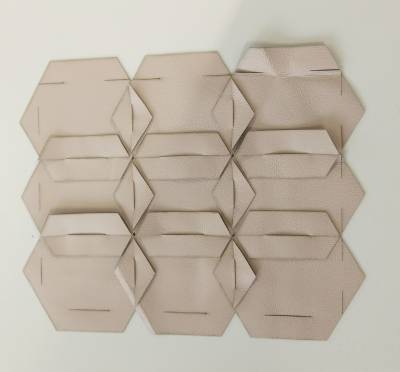
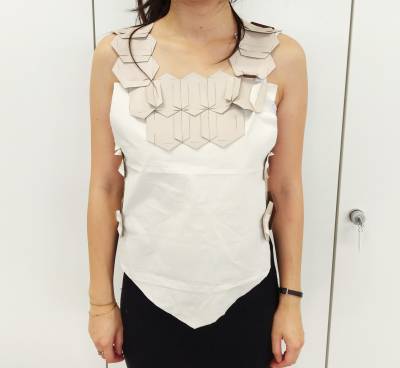
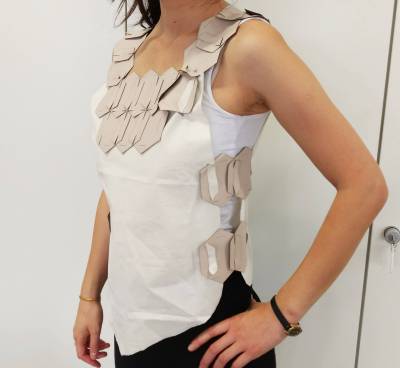
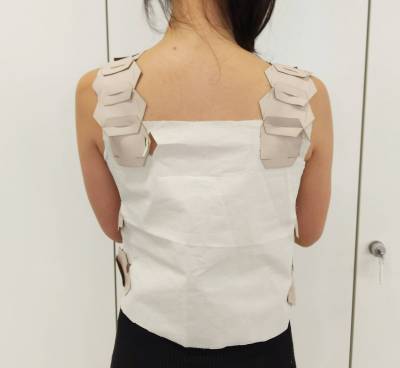
The Process
In order to create the modules and the vest, I took the following steps:
1. I began sketching and trying out different shapes and possible cuts. Materials used for this were geometric paper templates, tracing paper, pencil, ruler and cutting knife. Once I created a module I liked and fit together well, I reproduced this shape in Rhino.
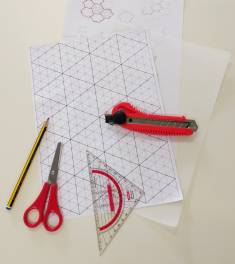

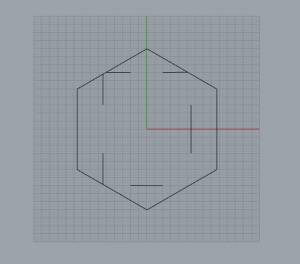
2. I selected my desired material, which was synthetic leather in a pale beige colour. Prior to printing my module on the material, I tested different power and speed settings. To do this I created 6 test squares, keeping the speed at 100 and increasing the power from 20 to 45, by increments of 5. It was important to put each square into a separate layer so that each layer could be programmed differently.
I found these settings produced the best cut: speed - 100, power - 40. I also tested the engraving (on the right hand side of the material), the best setting for engraving was : speed - 100, power - 20.
Finally, I printed my modules.
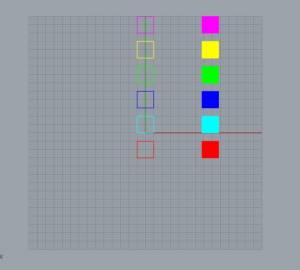
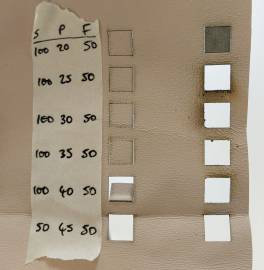
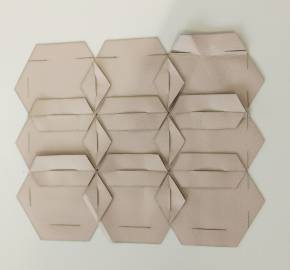
3. For my garment, I thought of a skirt, a t-shirt, different vest designs, and finally decided on the design I went ahead with. I tried to use Rhino to digitally create the body (without the module straps or sides) of the front and back:
- I imported a body mesh.
- in the front view, I drew my vest using the line function and mirroring.
- I projected the lines onto the body mesh.
- I created a workable surface from the lines - this was rather difficult to do and it took me a long time as the program continually created a surface that was bigger than the vest. Eventually I realised that I needed to create more lines that crossed the mid line - this made the surface fit the shape of the vest and also created a better shape around the bust and stomach.
- I used the 'squish' function to lay the design out flat.
Unfortunately, using the program and the problems encountered meant that I ran out of time, so I couldn't continue working on my design digitally in Rhino.
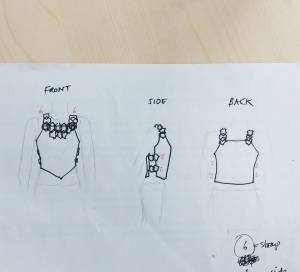
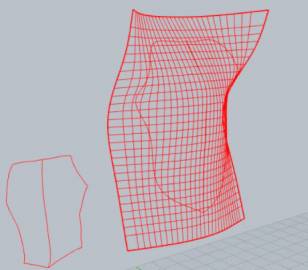
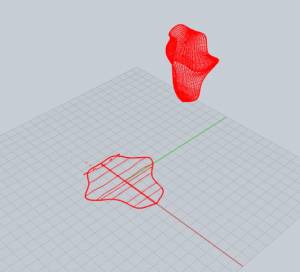
4. Therefore, I decided to make my vest prototype manually - with a view to reproducing it digitally once I figured out the best cut and positioning of the modules. I based the cut of the body on an existing vest that was slightly similar to the design I had in mind. To create the prototype, I:
- Used paper to make a template of the existing vest, for the front side and the back side.
- Put the template on a female model to figure out the best cut for the design I had in mind (eg. the correct length, height of the neck, distance between the two parts at the sides).
- Placed the modules on the model to decide the best place to make the cuts in the paper/fabric.
- Once these were finalised, I used the final paper template to cut the parts out of the desired fabric - an off-white, stiff, cotton-like material.
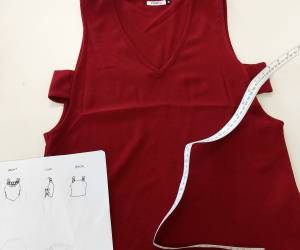
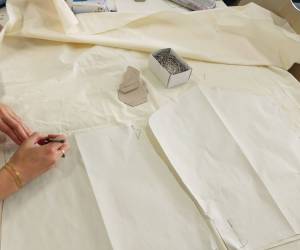
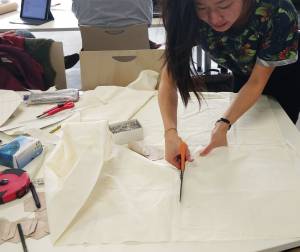
5. Once cut, I then assembled all the parts and modules together.
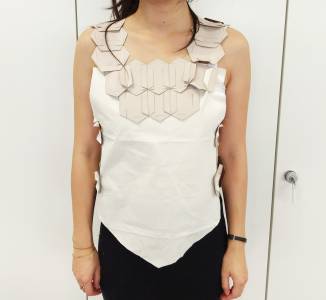
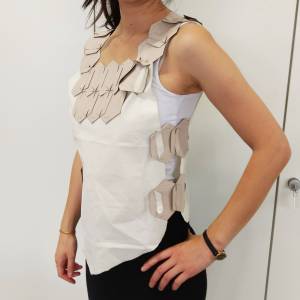
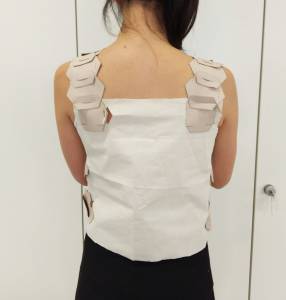
Problems
Other than the problem I encountered with Rhino, as mentioned earlier, I came across other problems during this project. The modules that connected the straps to the neck did not fit together because they were of different orientations - this meant that a smaller male part had to fit into a wider female cut, which wasn't secure and the strap continued to break away at this section. Therefore, these modules need amending so that the appropriate cuts are made and the straps stay safely intact.
With the current module design, when I connected the modules to the fabric, it didn't produce such a nice look at these intersections - it looked rough and not well thought out. Therefore more thought needs to be put into the cuts at these sections.
Also, I found that the fabric was not as stiff as the modules, and it seemed that this inequality contributed to a less secure hold. I think I would need to either find materials with equal stiffness or reinforce the less stiff fabric in some way, perhaps with another layer of material underneath it.
Lastly, as I have not produced clothes or made patterns before, I encountered problems with creating a nice shape around the female form - particularly around the bust. I think I would need to add in some stitching to take in the material a little around the bust so that the fabric would fall over this area better.
Final thoughts
I like my final module design, I think it's simple but pretty, and I enjoyed incorporating this into a garment. With some extra thought and work, I think my garment would be a nice looking piece that people might want to have. I deliberately chose materials that were different in colour and of contrasting texture, which I think worked well in the end.